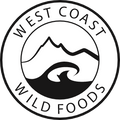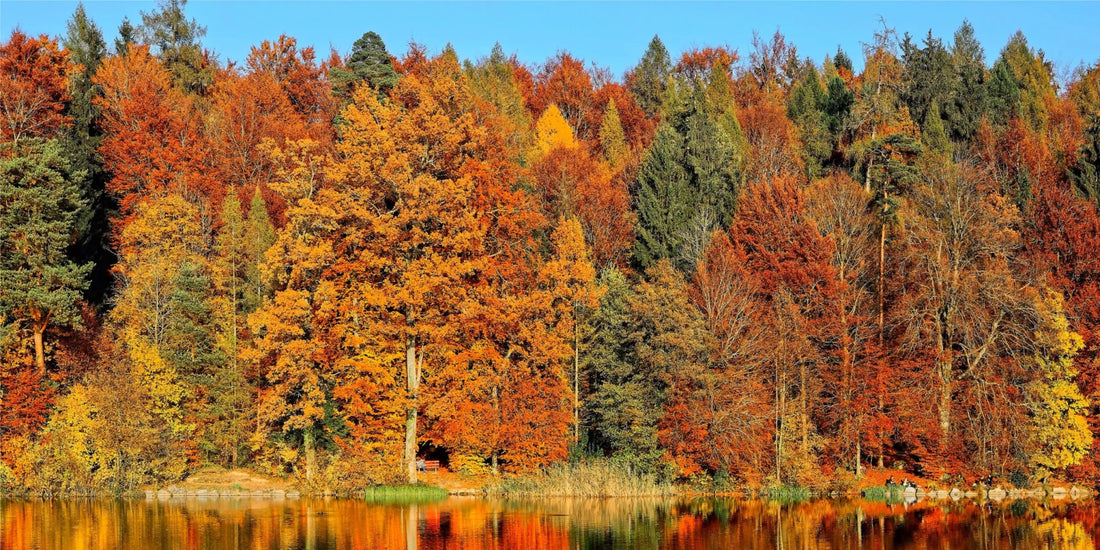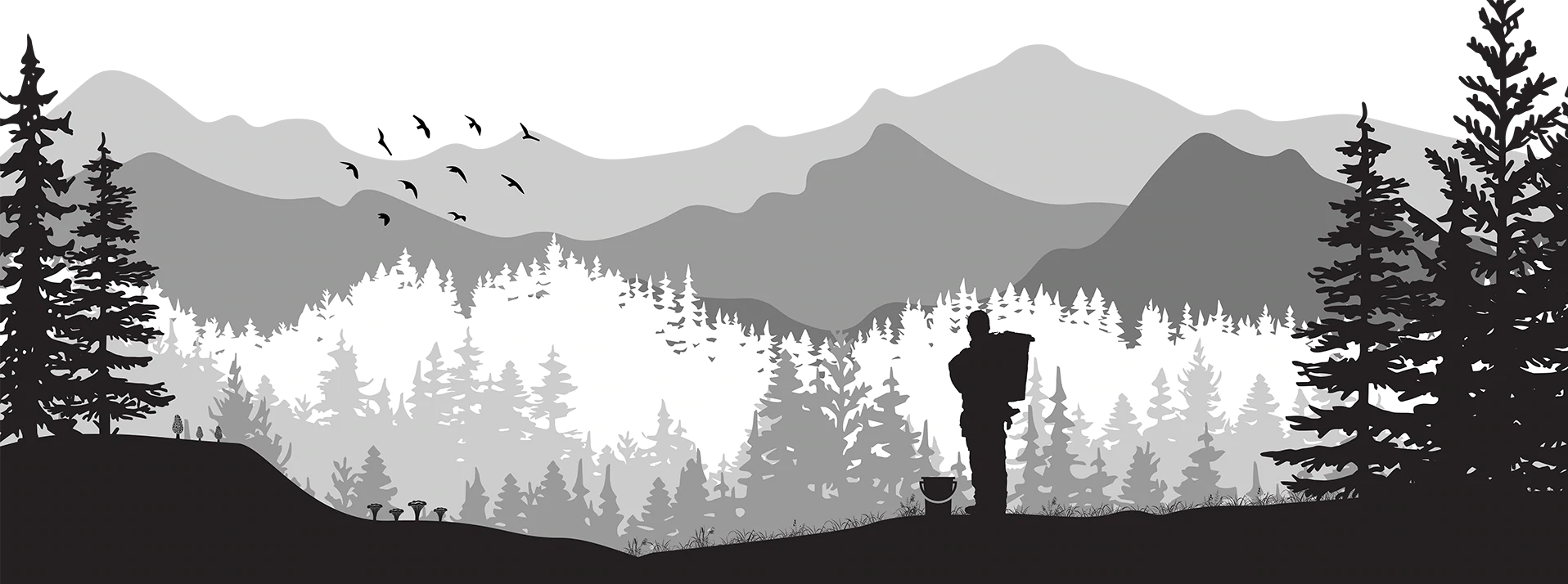Harvesting wild edibles and fungi is a wonderful way to find your next meal. It turns what could have been a boring trip to the market into the incomparable experience of diving into the woods. Armed with scissors, a bucket, an ID guide and a sense of adventure, you can find some truly delicious edibles this fall. Just know where to look and you have your wild edibles sorted.
The important thing to remember when out in the forests is that you aren’t the only one. You have control over how much you take and how, so remember to be sustainable in every step you take to ensure there is a healthy forest there for years to come.
An essential part of sustainable harvesting is taking only the parts that you need, and always making sure that you leave enough behind for the plant’s health and the animals that feed on it. Never rip out a whole plant just for a single part. With some common sense and keeping the environment’s health in mind, you will come back home with the satisfaction of a delicious dinner and doing your part to keep all these species alive and well.
Now, let’s talk about the best wild edibles for the fall season to give you some inspiration for your next meal!
Rose Hips
Known sometimes as the fruit of the rose, rose hips are accessory fruits from roses. They look like bright red or orange berries with brown wisps that come out of their bottoms.
Before harvesting rose hips, keep in mind that the longer they stay on the plant the sweeter they get. The best time to consider harvesting the hips is after the first frost of the season (think ice wine). For jellies, liquor, or jam you should choose from the older and shrivelled rose hips, even if they don’t look as nice, they are sweeter and their smell is delicious. Of course, if you want them for a soup or sauce this won’t be as important.
Something important to note about rose hips is that they are full of fine hairs and seeds. These hairs can be very irritating, in fact, the original itching powder was made from rose hip hair. So remember, unless you are making syrup or jelly, clean all the hairs and seeds from your rose hips before using them for cooking.
Cattail Roots
Cattail roots are available for harvesting all year, but the best time is during fall and winter. You can find cattails swaying in shallow slow moving or still water. They are particularly common in wetlands and marshes. You can recognize them by their tall slender leaves and long green stalks with fluffy brown seed heads at the top.
To eat the roots first you must clean them and then remove the smaller branching roots, leaving just the large root or rhizome. You can boil, bake or grill until soft and then they are ready to enjoy. You can also use them to make flour!
Roots aren’t the only edible part of the cattail, but those are for another season!
Chickweed
Chickweed is one of the only plants to continue growing into the colder months. It forms large matts along the forest floor, and in spring they are covered in small five petaled white flowers. Note that chickweed petals are divided in the middle and it looks like they have ten petals instead of five.
The stems, leaves, seeds, and flowers of this plant are edible. It’s a nice and soft addition to salads, and you can use it to make tea and vinegar.
Sorrel
You can identify sorrel by their arrow-shaped leaves, evident white mid-veins, and downward-pointing basal lobes. Another interesting characteristic is a pronounced angle joint in the stalk, covered in a paper-like sleeve.
You can find sorrel in woodland clearings and along the edges of forests. On the coast you find it commonly in urban settings because it does well in disturbed soil. You can harvest the root, leaves, leaf stalks, seeds and stem. It will add a delicious tangy flavour to your next salad.
Hazelnuts
Hazelnuts can be found in low clear forests. To find the perfect hazelnut, search for a plant with yellowing, doubly toothed, pointed and hairy leaves. Then you just need to collect the nuts from the plant or from the forest floor.
After collecting the hazelnuts, remove the husk and put them in an open cardboard box to dry. The drying process will allow them to keep for up to six months. You can also roast them, but they will only last a month using this method.
Golden Chanterelle
Chanterelles live in an interdependent relationship with trees, this connection takes time to develop so they need established forests to grow. So, to find those tasty golden chanterelles, you need to search for forest areas with older trees, they are commonly found around birch, maple, beech, poplar and oak trees. They also require a moist habitat, so you’ll find more of them during seasons with consistent rain.
Golden chanterelles aren’t the only bright mushroom in the forest, so once you find a candidate make sure it’s a chanterelle (use an ID guide whenever out mushroom hunting). In order to ID, notice that chanterelles grow individually, not in groups, then search for forked ridges on their underside that run down the stem. Also, they always grow in soil and never on the tree itself.
Lobster Mushroom
This mushroom is an easy one to find in the woods. To identify them properly, make sure they are bright red-orange, heavy like a paperweight, with a hard surface dotted with tiny pimples, and white inside. If you find lobster mushrooms that feel light, have a strong fishy smell and a prominent purple colour, leave them there, they’re too old. Before eating, clean them thoroughly and trim the dirty ends.
Anything prepared with lobster mushrooms should be eaten in less than two days even if they are in the fridge or else it can cause food poisoning.
Conclusion
Nature has many different flavours, colours, and textures to offer you in the search for delicious wild food. If you search in the right places, always remembering to carefully check what you harvest and leave enough behind to keep the environment healthy and the animals fed, you are in for an amazing experience. Foraging can be a fun outing, whether you find anything or not. Stay safe in the woods this fall and happy hunting.


